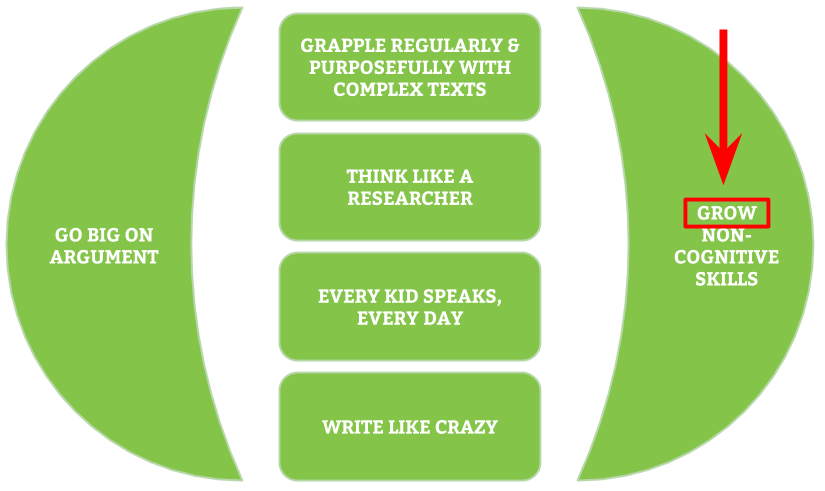
In my last post, I wrote that we literacy educators are wise to treat noncognitive skill development seriously and systematically; the research supporting them is too overwhelming to do less than choose the noncogs we want to aim for in our classrooms and then concertedly pursue their growth in ourselves and our students.
In this post, I'd like to propose a place to start.
Growth mindset: a concept at risk of buzzwordification
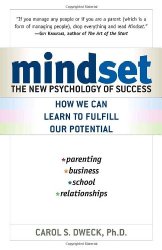 Growth mindset is a simple, powerful concept studied by Carol Dweck and explained in her book Mindset: The New Psychology of Success. Essentially, if you have a growth mindset you believe your abilities — how smart you are, how you backhand a tennis ball, how well you manage your time — can improve with effort.
Growth mindset is a simple, powerful concept studied by Carol Dweck and explained in her book Mindset: The New Psychology of Success. Essentially, if you have a growth mindset you believe your abilities — how smart you are, how you backhand a tennis ball, how well you manage your time — can improve with effort.
The alternative to growth mindset is fixed mindset: the belief that your abilities are already set.
Fixed mindset says, “I’m not good at reading.”
Growth mindset says, “I’m not good at reading right now, but I can get better if I work at it.”
Fixed mindset says, “I suck at math.”
Growth mindset says, “I'm currently struggling in math, but through working hard I'm going to tackle it.”
Fixed mindset says, “I’m a slow runner.”
Growth mindset says, “I am currently not as fast as my peers, but I'm improving on my personal speed through practice.”
As studies have shown, this simple difference is pretty powerful. Angela Duckworth, perhaps the leading researcher in the world on the non-cognitive skill of grit, said in a TED talk that, while she’s still pretty unsure of how to teach people to be gritty, the most promising body of work is that of Carol Dweck’s growth mindset.
Key idea: growth mindset is empowering for us and our kids
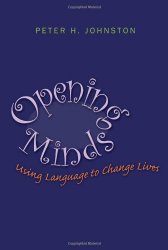 Growth mindset allows kids to see challenges as opportunities to grow rather than daunting judgments on who they are.
Growth mindset allows kids to see challenges as opportunities to grow rather than daunting judgments on who they are.
If I have a fixed mindset, challenges are scary because they show what I've got, and what I've got is fixed. If it's a math test, a fixed mindset says that the test will say if I'm good at math or not, and that's that. If it's a whole class book, a fixed mindset says that, if I can't read it, I must be stupid or just not good at reading, whereas a growth mindset says, “I'm going to have to work extra hard at this one.”
In his Opening Minds: Using Language to Change Lives, Peter Johnston aptly likens these two mindsets to worlds, which is really what they are. He takes the work further and deeper, though, through his “belief system frames” — if you pick up the book, check out the diagram on page 17 which compares the dynamic-learning frame to the fixed-performance frame. Essentially, Johnston says, the growth-mindset-based dynamic-learning frame enables kids to actually learn, whereas the fixed-mindset-based fixed-performance frame sentences kids to a schooling of endless, frightening assessments.
This is an incredibly powerful concept, dear reader, because it explores the idea that we — as teachers and as students — are hapless victims of a standardized-testing-crazed culture, and instead gives us a mental framework within which to flourish even in assessment-obsessed times.
Also, keep in mind that we ought to aim to help our kids transfer growth mindset as broadly as possible. We'd be missing a great opportunity if we limited growth mindset to intellectual skills like reading and writing and didn't encourage students to apply it to areas like relationships with friends and family, extracurricular activities, and skill in the arts.
 A quick side-note for teachers and admins in “gifted and talented” (GT) programs
A quick side-note for teachers and admins in “gifted and talented” (GT) programs
In Mary Cay Ricci's Mindsets in the Classroom: Building a Culture of Success and Student Achievement in Schools, she discusses the difficulty of developing growth mindset in students who are labeled gifted and talented because these labels suggest that being gifted or talented is something you are — a fixed ability — rather than evidenced by things you do or how motivated you are. I respect that Ricci tackles this, as she is currently the Coordinator of GT Education for Baltimore County Schools.
From Mindsets in the Classroom:
‘What determines whether individuals are gifted or not is not what they are but what they do.' … Rather than overusing the term gifted, consider using other words or phrases such as ‘high-potential learners' or ‘highly motivated.'
I share this for a few reasons:
- The GT label has always bothered me, both for what it communicates to those inside such programs and those outside of them — now I know a bit more about why.
- GT teachers and administrators will serve their charges well by thinking carefully about the language used with kids.
Four methods for developing growth mindset: intentional praise, well-framed activities, illustrative stories, & brain research
Before going into the four ways I seek to build growth mindset in my students, let me just share that growth mindset is tricky — it’s one thing to get kids to intellectually assent to the fact that hard work is more important than innate ability, but it’s a much more challenging thing to get them to act out of that belief.
In other words, if you were to give my students Dweck’s mindset questionnaire, virtually all of them would test for growth mindset. Yet I still have a fraction of students who do not put in the necessary work to put themselves on the road to college and career readiness. Still working on that.
I guess the point is, reader beware: there are no silver bullets in education, and the below techniques are no exception.
Method 1: Intentional praise
Few would argue that calling a kid stupid is a bad idea. What many find surprising, though, is that the opposite — calling a kid smart — is bad, too.
One of Dweck’s key studies illustrates this. In the study, Dweck took two groups of elementary students; one group was praised for being smart, the other was praised for working hard. After this, both groups were given the chance to take a challenging assessment. The “smart” group was hesitant to take the assessment, while the “hard working” group was open to trying.
What’s really crazy is that when both groups were given the assessment, the “smart” group did not perform as well as the “hard-working” group.
Essentially, Dweck found that praising kids in a fixed manner — in this case, that their achievement was due to the fixed state of “being smart” — retards both their motivation to engage with challenges and with the actual performance on assessments, whereas praising kids in a growth manner — in other words, attributing their success to hard work — propels their growth in the long term.
So the first method for developing growth mindset is by being thoughtful with how you praise students.
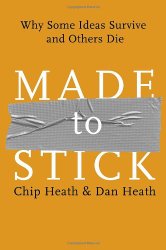 Method 2: Illustrative stories
Method 2: Illustrative stories
Storytelling is powerful. In Made to Stick: Why Some Ideas Survive and Others Die, authors Chip and Dan Heath write about students who were asked to recall the contents of speeches they heard:
When students [were] asked to recall the speeches, 63 percent remember[ed] the stories. Only 5 percent remember[ed] any individual statistic.
And this means that you, dear educator, and I must develop a go-to repertoire of stories that illustrate the power of hard work and growth mindset.
A great place to start for those stories: Dweck’s book. While I find Mindset to be a pretty repetitive read, I do appreciate its large collection of illustrative anecdotes sprinkled throughout. The next step would be reading biographies of people who have become successful through hard work. I also use personal stories when appropriate.
(For more on why storytelling is awesome, check out this blog post from my boy Eric Barker.*)
*He is not my boy, but his blog is cool so I feel a strong affinity for him.
Method 3: Well-framed activities
I picked this one up from Johnston's Opening Minds:
The way we frame activities [is influential in developing dynamic-learning frame in students]. For example, introducing an activity by saying ‘Let's see who's the best (or quickest) at doing these problems' is very different from ‘Let's see which of these problems is the most interesting.' These will lead children to different understandings of what they are doing, focus their attention on different information, and turn their energies toward different goals.
Method 4: Teach kids how their brains work
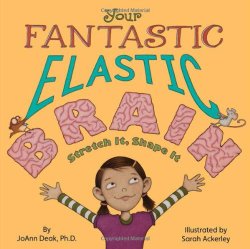 The key idea about the brain to get across to kids is that the brain is like a muscle in that it can be developed and strengthened.
The key idea about the brain to get across to kids is that the brain is like a muscle in that it can be developed and strengthened.
I don’t want to just tell my students about the specific brain research that supports this; I want them to grapple with reading it. Here are two articles I use:
- “How to Grow a Super-Athlete,” by Daniel Coyle for the New York Times. This article discusses the neurological process of myelination, which I discuss further on the blog as part of this post.
- “12 Things We Know about How the Brain Works,” by Shane Parrish for The Week. Kelly Gallagher also has a shorter, article-of-the-week style of this article here.
While writing this post, I had the bonus experience of discovering a children's book that would be great for elementary kids (I'm picking up a copy to read to my pre-school-aged daughter): Your Fantastic Elastic Brain.
However you do it, the idea is that kids are more likely to not just have growth mindset but to act from it when they're taught what's actually happening in their noggin while they break a sweat on hard, intellectual tasks.
How does growth mindset work in your classroom?
I know this concept has been around for a while, so please, if you've got more to add to this discussion for the good of the Teaching the Core community, do so down in the comments 🙂
caragregory says
I’m switching to teaching middle school this year after teaching HS for 16 years. I’m excited about instilling a growth mindset in my students! Thanks for the details. (and for emailing a list of your summer writing as I had missed this one!) Cheers for a great school year!
ruleoneuniversity says
This is a great article on having a growth mindset. Thanks for the resources too. I’m a big fan of Dr. Dweck’s teaching on mindset and also found some great materials on the 7 Mindsets website http://7mindsets.com/blog
davestuartjr says
Thank you for sharing this!
tash says
anyone know who the author of this is?